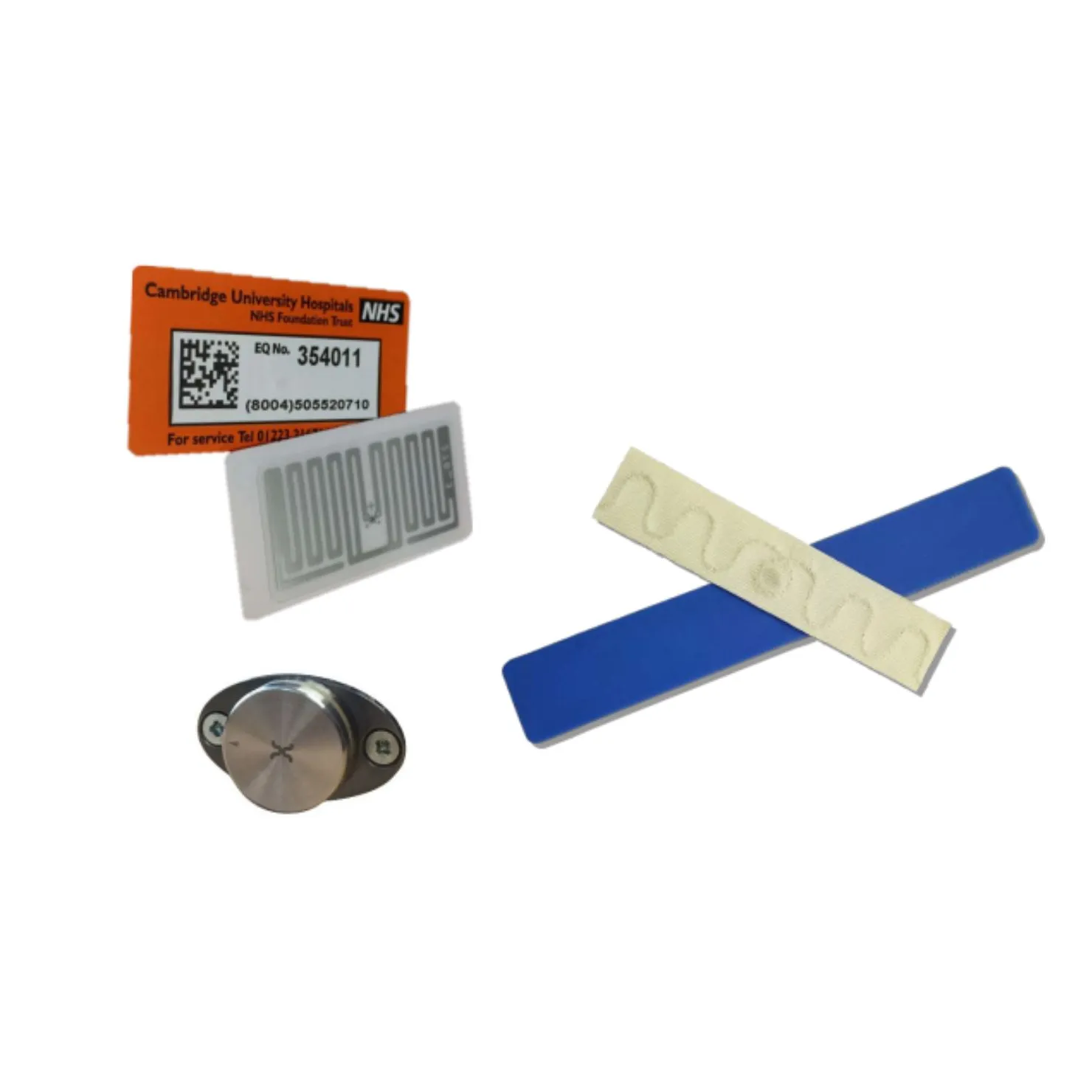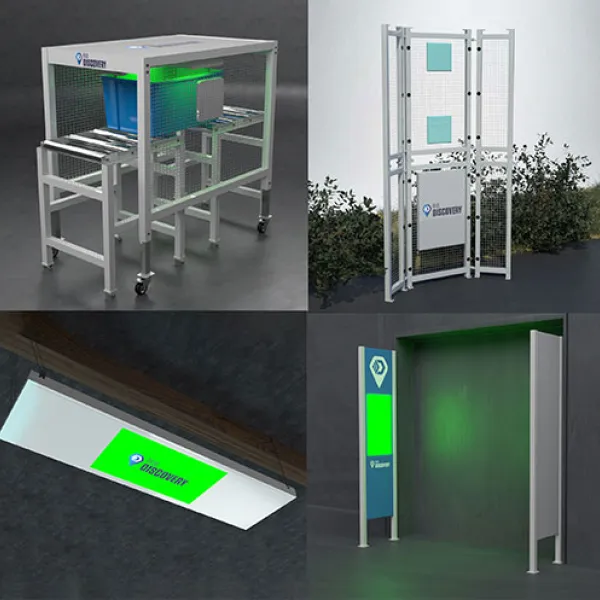RFID

Benefits
What is RFID?
RFID – Radio-Frequency Identification – is a system that utilises electromagnetic fields to wirelessly identify and track objects equipped with an RFID label or tag. These tags contain a microchip as well as a radio antenna which enables the tag to send its ID to a corresponding reader. Each microchip contains a unique code – called the tag identifier - registered by the manufacturer during the production of the microchip. The chip can store and transmit data to other equipment within the system.
As well as tags and readers, RFID systems also include a database and software for processing the data. Our RFiD Discovery software can be integrated with other systems to streamline processes throughout your organisation.
RFID technology offers businesses across industries unparalleled efficiency in inventory management, asset tracking, supply chain logistics, and more.
RFID Frequencies
RFID operates at different frequency bands, each with its own characteristics and applications:
- Low Frequency (LF): 125-134 kHz, commonly used for access control, animal identification, and asset tracking.
- High Frequency (HF): 13.56 MHz, popular in applications like contactless payment, NFC (Near Field Communication), and smart cards.
- Ultra-High Frequency (UHF): 860-960 MHz, widely used in supply chain management, inventory tracking, and retail.
- Microwave Frequency: 2.45 GHz and higher, suitable for specialised applications such as toll collection, vehicle tracking, and industrial automation.
How does an RFID system work?
An RFID tag is attached to each item or person to be tracked. RFID tags are small devices that contain electronically stored information. Each tag includes an ID number which is registered on a database to identify either a unique item or item type depending on the application.
Mobile or fixed readers receive the signals from tagged assets, and location information is passed to a central database via 3/4/5G or Wi-Fi. RFID readers can be stationary or handheld, depending on the application.
The data captured by RFID readers is then processed and stored within an organisation's existing software systems such as ERP, WMS, or asset management system. This allows users to access real-time information about tagged objects such as their location, status, or other relevant details.
Active and passive RFID
RFID tags can be passive, drawing power from the electromagnetic field generated by an RFID reader, or active, containing their own power source to transmit data.
Passive RFID

Passive RFID tags do not have an internal power source. Instead, they are powered by the electromagnetic energy transmitted from RFID readers. These tags are smaller, lighter, and less expensive compared to active tags, making them ideal for applications where cost and size are critical factors. Passive RFID tags have a limited read range, typically up to a few meters.
Active RFID

Active RFID tags have their own power source, usually a battery, which enables them to transmit signals over longer distances and in more challenging environments. Active tags have a longer read range, which can extend up to several hundred meters, making them suitable for tracking high-value assets over large areas.
Types of RFID Readers
Mobile RFID Readers
Devices that can either be carried by personnel or pushed along for example on a trolley for on-the-go asset tracking, inventory management, and security inspections. They offer flexibility and mobility, making them suitable for various industries including retail, healthcare, and logistics. Where budgets are tight, mobile readers can replace a fixed reader infrastructure to keep implementation costs low.
Fixed RFID Readers
Stationary readers installed at specific locations such as entry points, exit gates, or conveyor belts. Fixed readers are commonly used in warehouse management, manufacturing, and transportation to automate processes, improve efficiency, and enhance visibility throughout the supply chain.
RFID Portals
Readers are integrated into a specific physical structure designed for particular use cases, for example for use at warehouse or gate exit points or as part of a conveyor system. Integrated portal readers enable seamless RFID functionality simplifying deployment and integration in existing infrastructure.
Why use RFID?
Improved accuracy
RFID technology ensures data integrity by automating data capture processes, reducing human error, and providing accurate, real-time information.
Optimised operations
Streamline processes, eliminate manual processes and boost productivity across your organisation. RFID technology accelerates inventory management, asset tracking, and allows your organisation to operate at peak efficiency. For many applications, RFID is far more powerful than barcodes.
Cost savings
Achieve cost efficiency through reduced operational costs, optimised inventory levels, and minimised losses due to misplaced tools. RFID technology leads to improved profitability and growth.
Typical applications of RFID technology



